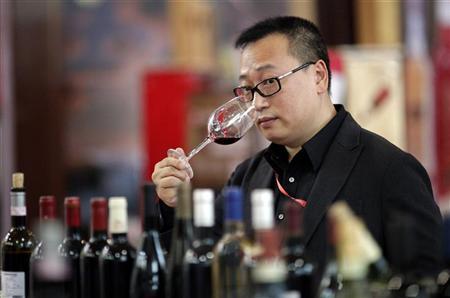| China's wine industry ripens as local thirst grows | |||
|
|||
|
Even as Chinese consumers further develop their taste for fine French wines, producers in China itself are upping their game with wines that have made great strides over the last decade, said wine expert Jancis Robinson. Chinese demand for imported wine remains massive, but the country is now also among the top five growers of grapevines in the world. "Every time I get to China, I try and get together the best wines that are being made. When I first went into that exercise, I think it was in 2002, it wasn't very inspiring at all," Robinson, a Master of Wine, said on the sidelines of an international wine conference in Hong Kong. "But actually last year, I was very heartened because I tasted several wines that I thought were quite respectable." A Master of Wine is a qualification attained after several years of study, and according to the Institute of Masters of Wine, there are only some 300 in the world. Most of China's wine is sold to the domestic market and the vast majority of it remains less than impressive -- thin, acid and a bit astringent, Robinson said. "At the moment, only a tiny proportion of Chinese wine is really, really good quality," she added. "The grapes are fully ripe. They're clean. They're fruity." Quite a bit of effort has gone into locating parts of China that are suitable for wine production, but at this point one of the more notable provinces is the region of Ningxia and in particular the part of it known as Helan Mountains, along the Ningxia border, Robinson said. Demand for wine in the Chinese mainland, which has grown rapidly over the past few years, remains strong, helping to keep Hong Kong a pre-eminent global wine hub even as global economic uncertainty cuts demand for luxury goods. Imports to the teeming city surged 57 percent in the first nine months of 2011, year on year, to $940 million, with imports seen from all major wine-growing regions including France, Italy, Australia and South America. Despite the growth in wine-producing regions, European nations, including France, Spain and Italy, remained at the top of the list of global grape growers in terms of vineyard area in 2009, industry data showed. Robinson said she remains convinced that China -- along with Brazil, Turkey and Canada -- all have the potential to produce fine wines in the future. Turkey, while already producing some nice wines, needs to raise its profile among international oenophiles, while warmer weather in Canada is helping grapes there ripen more and Brazil is looking into new wine-producing areas that may help improve quality. But France's crown as a top investment is unlikely to face much challenge for some time yet, Robinson added. "France was always going to get the lion's share of the absolute crème de la crème of the most famous wines, the kind of investment grade wines," she said. "But the great thing nowadays is that wine is such a popular interest worldwide that people are now trying to make wine all over the world, including all over Asia." |
| Tools: Save | Print | E-mail |
|
| Comment |





